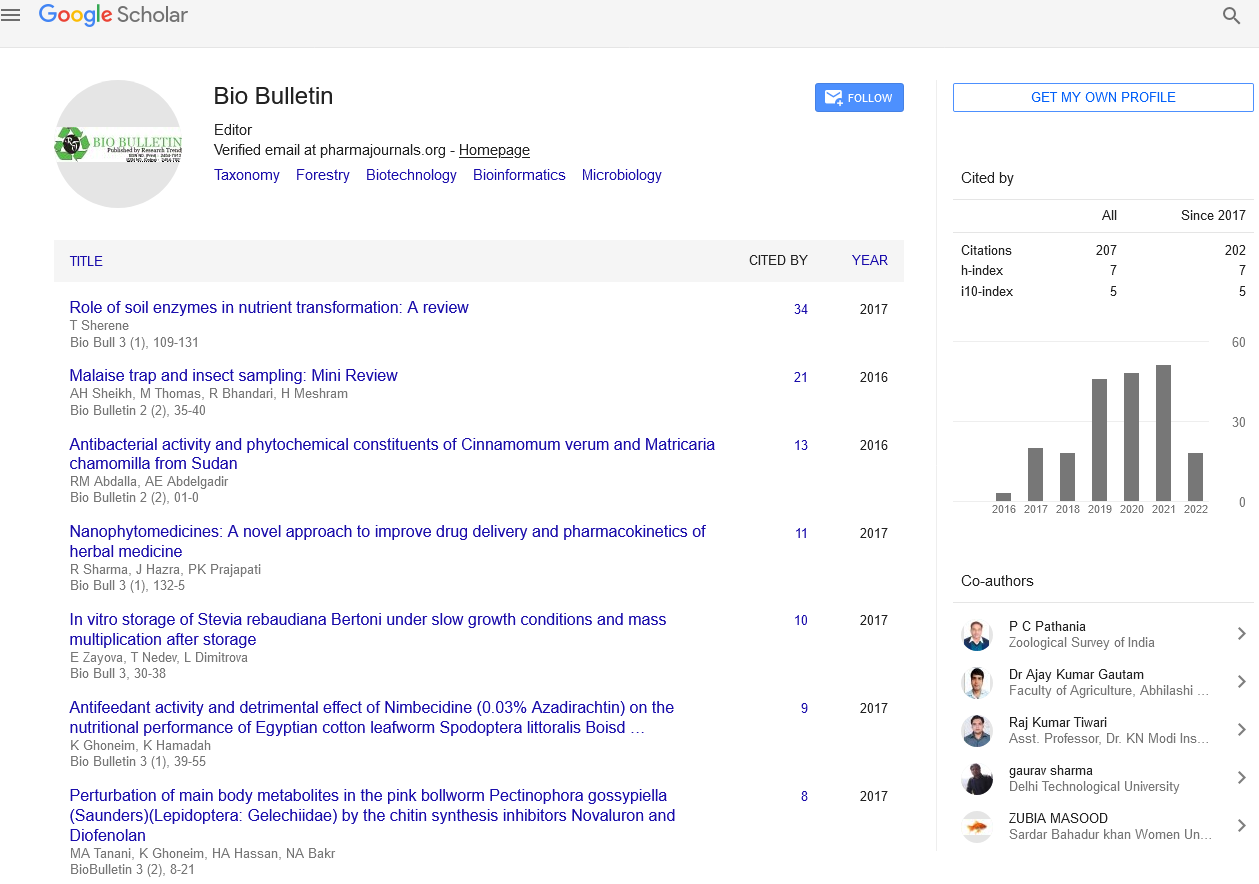Microbes Role and Functioning in Human Body
Perspective - (2022) Volume 8, Issue 2
Description
Microbes live on the skin, in the gut, and up the nose, and they can be found in almost every area of the human body. Microorganisms may cause illness, but for the most part, they co-exist peacefully with their human hosts, performing crucial functions necessary for human existence. The normal microbial makeup of healthy individuals has been mapped for the first time by a group of researchers led by the National Institutes of Health, yielding several insights and even a few shocks.
For example, researchers discovered that practically everyone has pathogens, or bacteria that cause illness. Pathogens, on the other hand, do not cause disease in healthy people; they simply cohabit with their hosts and the rest of the human microbiome, which is the combination of all microorganisms that host in the human body. Researchers must now figure out why and under what conditions some pathogens become lethal, which will likely need a rethinking of how microbes cause disease.
The human body is a shelter to trillions of microbes, which exceed human cells by 10-1. Microorganisms, on the other hand, make up only around 1%-3% of the body's mass, but they play a critical role in human health.
To describe the normal human microbiome, Human Microbiome Project (HMP) researchers collected tissues from 15 body sites in men and 18 body sites in women from 242 healthy volunteers (129 male, 113 female). Each participant provided up to three samples from mouth, nose, skin (two behind each ear and each inner elbow), lower intestine (stool), and three vaginal sites in women; each bodily location can be inhabited by organisms as diverse as those found in the Amazon Rainforest and the Sahara desert.
Doctors used to isolate pathogens and cultivate them in culture to study germs in their patients because microbial species are difficult to culture in the lab, this time consuming approach usually yields only a few results. Researchers isolated all human and microbial DNA in each of the over 5,000 samples in HMP and studied it using DNA sequencing devices. Researchers used computers to scan through 3.5 terabytes of genome sequence data to find special genetic signals present only in bacteria; the 16s rRNA variable genes of bacterial ribosomal RNA. Bacterial ribosomal RNA aids in the formation of cellular structures that produce protein and can be used to distinguish various bacteria species.
HMP researchers were able to ignore human genome sequences and focus solely on bacterial DNA by focusing on this microbial signature. Furthermore, the researchers were able to analyze the metabolic capabilities contained in the genes of these microbial communities using meta-genomic sequencing, which involves sequencing the entire DNA in a microbial community
Whereas doctors traditionally isolated only a few hundred bacterial species from the body, HMP researchers now estimate that the human ecosystem contains around 10,000 microbial species. Furthermore, experts estimate that between 81% and 99% of all micro-organismal genera in healthy humans have been discovered.
The HMP researchers also discovered that this swarm of bacteria contributes more genes to human survival than humans contribute. Researchers estimate that the human microbiome provides over 8 million distinct protein-coding genes, compared to the human genome's 22,000. This genetic input from bacteria is crucial for human life.
Furthermore, the human microbiome components fluctuate with time when a patient is unwell or takes antibiotics, the microbiome species makeup can change dramatically if one bacterial species or another is harmed. The microbiome, on the other hand eventually returns to balance even if the previous bacterial makeup does not returns.
Clinical applications
NIH financed a lot of studies as part of HMP to look for links between the microbiome and diseases, and several PLoS papers incorporate medical data.
After exiting the sterile womb, a newborn becomes a bacterial sponge, populating its own microbiome; passage via the birth canal provides the baby with his or her first dose of microorganisms, thus it is not surprising that the vaginal microbiome developed to make it a healthy passage. These are some of the first clinical studies to look at the function of the microbiome in particular disorders.
Conclusion
A series of studies was also funded by the NIH Common Fund to assess the ethical, legal and social aspects of microbiome research. While the findings of these studies have yet to be published, they have already raised a number of important questions, including how products designed to manipulate the microbiome such as probiotic concoctions that include live microorganisms believed to benefit the body should be regulated, as well as whether people should start thinking about storing their microbiome while they are still healthy.
Author Info
Steve Cooper*Citation: Cooper S (2022) Microbes Role and Functioning in Human Body. Bio Bulletin, 8(2): 01-02.
Received: 02-Jun-2022, Manuscript No. BIOBULLETIN-22-66755; , Pre QC No. BIOBULLETIN-22-66755(PQ); Editor assigned: 07-Jun-2022, Pre QC No. BIOBULLETIN-22-66755(PQ); Reviewed: 28-Jun-2022, QC No. BIOBULLETIN-22-66755; Revised: 05-Jul-2022, Manuscript No. BIOBULLETIN-22-66755(R); Published: 15-Jul-2022, DOI: 10.35248/2454-7913.22.8.093
Copyright: This is an open access article distributed under the terms of the Creative Commons Attribution License, which permits unrestricted use, distribution, and reproduction in any medium, provided the original work is properly cited.

